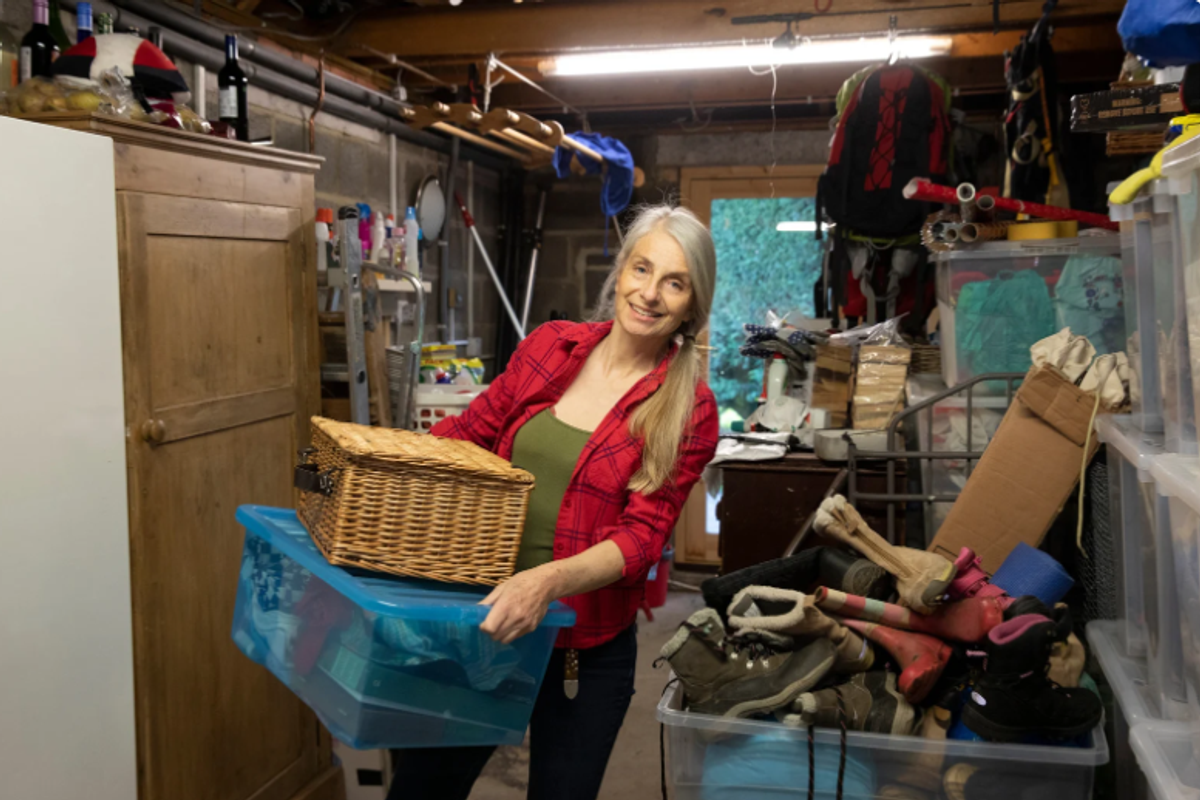Add this library to your travel bucket list — because it's super old and super pretty.
Old libraries are pretty dope.
Trinity College Library in Dublin, Ireland. Photo from Benoit Doppagne/AFP/Getty Images.
For bibliophiles like me, walking through an old library feels like walking through a cathedral. The way the light filters through the windows, the sound of hushed conversations, the slightly rough feeling of a leather-bound book sliding out of a shelf ... old libraries even have their own smell.
And there are some really amazing old libraries, like Trinity College Library pictured above, or New York Public Library, or the British Library — all of which I've either loved visiting or keenly want to.
But if we want to talk about old libraries, the Qarawiyyin Library beats them all.
The library courtyard. Photo by Samia Errazouki/AP.
Qarawiyyin is the oldest library in the world and is located in Fez, Morocco. The first foundations were put down in the year 859, making the library nearly 1,200 years old.
Unfortunately, at nearly 1,200 years old, the library was seriously starting to show its age.
I'm talking broken tiles, no insulation, cracked beams, walls that were starting to look considerably un-wall-like ... there were even exposed electrical wires and sewage problems.
And what's worse (at least from a bibliophile's perspective) the books were in danger! Water had started to creep into the collections, threatening the library's some 4,000 manuscripts. If you've ever accidentally dropped a favorite novel into a bath before, I don't have to tell you how quickly water can ruin books. And when we're talking about books older than the Renaissance, even just a spike in humidity can do some serious damage.
Taken together with the crumbling structure, the library needed to be closed off to the public for at least a couple years.
In 2012, the government asked architect Aziza Chaouni to help restore the library.
And, today, it's going to be ready for visitors again!
A reading room. Photo by Samia Errazouki/AP.
The pictures from inside the library look amazing. Chaouni, a Fez native, has restored the library to its original glory, revealing a distinctly elegant building full of elaborately carved windows and archways, with Arabic calligraphy built into the walls and golden chandeliers hanging from the ceiling.
Behind the scenes, though, Chaouni's renovations have also added a distinctly modern aspect to the library as well. Air conditioners run surreptitiously behind wooden carvings. Solar panels capture sunlight and help power the building. And, yes, they've even fixed the plumbing problems.
The books have also gotten their own upgrades.
Photo by Samia Errazouki/AP.
An underground canal system will help drain that book-killing moisture away from the building, and a lab full of advanced machinery will help scholars preserve and digitize the rare books.
There's even a special highly-secure room for the rarest and most valuable documents, including a 1,200-year-old copy of the Quran.
This copy of the Quran is over 1,200 years old. Photo by Samia Errazouki/AP.
Precise temperature and humidity controls and strict security mean these super-rare, super-valuable texts and manuscripts receive the care and attention they deserve.
These changes mean that, once again, the library will be open to everyone, and it will rejoin Fez's amazing cultural legacy.
In fact, the entire neighborhood, known as the Medina of Fez, is so amazing that the UN has declared it a World Heritage Site.
The library is also attached to a mosque and university, and it features archives, reading rooms, cafes, and even a courtyard adorned with fountains.
Photo by Samia Errazouki/AP.
No definite opening date has been set yet, but the Qarawiyyin Library is expected to open by the end of the year. Morocco's King Mohammed VI is expected to inaugurate it when that day comes.
Chaouni wants this renovation to be part of a plan to restore Fez's status as a cultural center of Morocco, too. New music festivals have helped young people rediscover the medina and Chaouni has a plan to restore the river in Fez after years of pollution.
"I would like my kids to be able to see this heritage," Chaouni told The Guardian.
This library's story is particularly heartening considering how many important Islamic cultural sites are in trouble right now.
While Morocco has been more or less an island of stability, many other nations in the region have not been so fortunate. In 2013, for example, insurgents set fire to a library of historic manuscripts in Timbuktu, Mali. Farther away, ISIS has been targeting cultural sites throughout Iraq and Syria, including destroying thousands of books and documents when they raided the libraries of Mosul, Iraq.
This is especially hard to see considering the intimate and historic connection between scholarship and Islam.
Libraries are more than just a collection of books. They're a part of our heritage.
When the Qarawiyyin Library's founder, Fatima al-Fihri, first envisioned the library, she wanted to give her community a place of learning and wisdom.
It's awesome to see that nearly 1,200 years later that heritage is still intact.





 Stayin Alive GIF by Bee Gees
Stayin Alive GIF by Bee Gees 
 Friends sharing a moment in the sunlit park.
Friends sharing a moment in the sunlit park. Feeling the stress: A young woman holds her head in frustration.
Feeling the stress: A young woman holds her head in frustration. Friends sharing a laugh over coffee at a cozy café.
Friends sharing a laugh over coffee at a cozy café.
 Close up of lilac flowers. Photo by
Close up of lilac flowers. Photo by